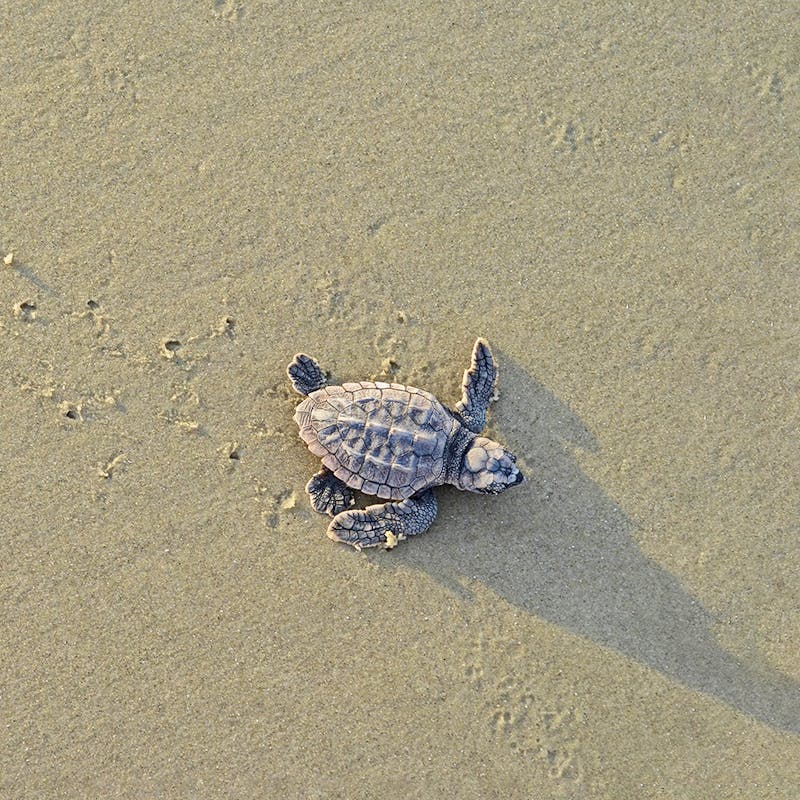By Emily Muniz
The Texas coast is a biodiversity treasure, generating $5 billion in revenue annually from tourism. Over 8 million people per year visit this coastline specifically for wildlife tourism. As a result, the Texas coastline is considered a top vacation destination and an important source of economic revenue for the state.
Of all the known biodiversity along the coast, there is scarce protection from developmental pressure. In fact, many of the alluring species that draw tourists to the coast are federally endangered. The whooping crane, Kemp’s ridley sea turtle and red knot are protected, iconic species, known to draw visitors from around the world. These species not only provide incredible ecological benefits, but they are also important to the Texas economy.
Padre Island National Seashore is one of the few federally-protected areas along the Texas coast. Here, the Kemp’s ridley sea turtle, a Texas gem, is found nesting in arribadas. An arribada is a phenomenon unique to ridley sea turtles; these are mass nesting events that occur for Kemp’s ridleys on the Padre islands of Texas and in one other place, Rancho Nuevo Beach in Mexico. Ensuring a consistent, protected coastline is of particular importance because the species is critically endangered and has distinct nesting behavior.
However, the Texas coast is home to more sea turtles than just the Kemp’s ridley. Four other protected species of sea turtles spend time either migrating through, or as year-round residents of the coast: green, hawksbill, leatherback and loggerhead turtles.
Green sea turtles are ecosystem regulators and maintain healthy seagrass beds through their constant grazing. When seagrasses die and decompose they form detritus—decaying organic matter—which is the basis of the food chain. Many smaller invertebrates depend on detritus as a food source. Larger organisms rely on smaller ones for food and sustenance. Seagrass beds provide critical nursery habitat to juvenile fishes, foraging ground to larger fishes, a home to millions of invertebrates, and are vital to global carbon sequestration, second only to the Tundra. Green turtles are critical components of seagrass bed health.
The red knot and the whooping crane are endangered birds renowned for their extensive migratory flights to the Texas coast to winter. Both species fill vital ecological roles by eating plants and animals, and serving as a food source. Ecotourism along the Texas coast is bolstered by the annual appearance of these birds, with tens of thousands of birders traveling to Texas.
Runoff pollution is a significant threat to the crucial ecological connectivity of migratory bird foraging grounds as Texas continues to undergo development and infrastructure changes. New infrastructure prevents rainwater from naturally soaking into the ground. Instead, it travels along roads, picking up toxins and pollutants that eventually enter waterways and compromise humans and wildlife. One solution is nature-based infrastructure, with natural barriers absorbing rainwater and preventing runoff.
Additionally, nurdles—the small plastic pellets that make up plastic—absorb toxic chemicals and are ingested by marine life that is then either eaten by other marine forms or humans. Weathering increases nurdle pollutant absorption, meaning the longer the plastic particles remain in the environment, the more hazardous they become.
An ever-present threat to wildlife along the Texas coast is the presence of offshore oil. Yet, this is also an economic threat to those that rely on a healthy coast for income. The infamous 2010 Deepwater Horizon oil spill resulted in losses of more than 25,000 jobs and $2.3 billion and highlights the devastating effects of oil spills on the economy. Ecosystems and species continue to suffer from the presence of toxic chemicals.
These are not the only threats facing the Gulf Coast. Proposed projects like Liquified Natural Gas plants and future SpaceX endeavors mean more natural areas and wildlife are at risk.
Defenders works to ensure that wildlife and land are managed to support responsible and sustainable conservation efforts.
Raising public awareness is also crucial to protecting vulnerable species and future generations, who deserve to enjoy the benefits of a thriving coast.
Defenders continues to educate the public on the impacts of such harms and on ways to intervene and make a lasting impact on their communities. To safeguard and conserve the Texas coast, we advocate for protecting critical natural areas to ensure that species and their ecosystems receive the support they need.
Emily Muniz is pursuing a degree in Environment and Sustainability at Cornell University and spent the summer of 2021 as a Field Conservation intern for the Southwest team.










